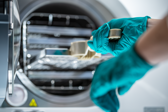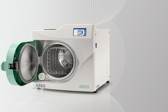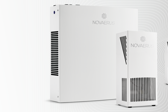Categories
Most Recent
Laundry in the veterinary practice
18th Jun 2023 in Animal HealthIn busy veterinary practices, the risk of infection transmission is high. As such, a stringent infection control protocol is vital to ensure your animals and staff are kept safe from harm.
Your laundry process is crucial to the overall safety of your veterinary clinic – how dependable is the laundry process you currently have in place? Are there areas that you could improve not only for the benefit of this protocol, but also to enhance your infection prevention processes overall?
What are the risks in veterinary practices?
Veterinary professionals work with potentially pathogenic microorganisms on a regular basis. These come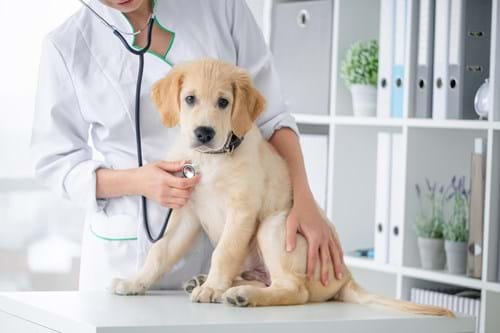 from animal bodily fluids, such as blood, vomit, saliva and faeces, and can find their way onto animal bedding, towels, staff members’ scrubs and uniforms, facilitating the spread of infection.
from animal bodily fluids, such as blood, vomit, saliva and faeces, and can find their way onto animal bedding, towels, staff members’ scrubs and uniforms, facilitating the spread of infection.
Zoonotic pathogens, which pass from animal to human, include psittacosis (carried by birds), histoplasmosis (from bird droppings), trichinosis (roundworm) and cat scratch disease. Likewise, animals are at risk when visiting a veterinary practice from urinary tract infections, infectious diarrhoea and pneumonia. Therefore, stringent infection control measures must be followed to ensure all risks to staff and animals are kept to a minimum.
Laundry is a job that likely takes place throughout the day and processing staff may not spare much thought for it – much like when doing laundry at home. But effectively processing your soiled loads is a key step in breaking the chain of infection. As such, investing in high-grade washing and drying units will help to enhance this stage of your clinic’s infection prevention protocols.
Commercial v. domestic – what is the difference?
A study found that, out of the 100 participating vets, 46% said they have a domestic washing machine in their clinic [1] . While some clinics may manage with a domestic unit, there are considerable differences between domestic and commercial equipment performances.
Common household systems are, firstly, not designed to deal with the level of contamination that may be present in veterinary loads. While it is generally accepted that laundering at a temperature of 60°C is sufficient [2], could a domestic unit manage being used on a regular basis, perhaps even multiple times a day in especially busy environments? Breakdowns are a higher risk with domestic models, not only as a result of overuse but also due to pipes clogging with animal fur, residue and material fibres.
Domestic units may seem economically attractive, but ultimately you may find yourself out of pocket further down the line due to breakdowns, or even having to buy another unit altogether. Longterm, leading commercial washing machines will be able to bear the brunt of continuous use, especially at higher temperatures which will help to kill bacteria. Plus, cycle times tend to be quicker on commercial units, saving time for your team.
Many staff members take their soiled scrubs and uniforms home to wash. Prior to washing, if these items are stored with dirty household washing, there is a risk of infection transmission. Your domestic laundry may also be stained. Other items in their washing machine, such as their clothes, towels and bedsheets, may end up being washed alongside potentially pathogenic micro-organisms, transferred from a sick animal or their bodily fluids. Having a washing machine and dryer on-site not only helps to reduce this possibility, but it is also convenient. In practice, loads can be safely and efficiently laundered under a team member’s supervision,
so you can rest assured that they are being processed adequately.
Eco-friendly laundry
Sustainability is a hot topic across the profession, with many clinics seeking ways they can reduce their impact on the environment. According to a survey from the BVA in 2019, 89% of vets said they would like to be more active in the UK sustainability agenda [3].
There are many ways this can be done, but have you considered the impact of your laundry systems? As you know, domestic units are not built to withstand daily use in a busy animal healthcare facility. When you have to keep replacing your broken-down systems, these materials will end up in landfill – that is a large quantity of plastic every time you dispose of your domestic system. Plus, a considerable amount of emissions would be produced through any subsequent road and air travel, further promoting a higher carbon footprint. When you invest wisely in leading commercial laundry systems, you are contributing to reducing your clinic’s carbon footprint, while saving money in the long-term too.
WRAS approval
Safe water should be a priority for all, especially in clinical settings like veterinary practices. The Water Regulations Approval Scheme (WRAS), an independent UK certification body for plumbing products and materials, is designed to help businesses and consumers demonstrate their compliance with water supply regulations [4] . 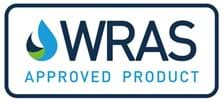
While all water fittings must lawfully conform to the water supply regulations, obtaining WRAS approval is not a legal requirement in itself. However, it is the best way to demonstrate your compliance and dedication to protecting your clinic. WRAS approved systems are designed to prevent backflow, which is when contaminated water mixes with clean water.
Contaminated water is always a risk and by investing in WRAS approved systems, you can better reduce this risk. Most concerningly, Legionella pneumophila, a bacterium that can cause severe pneumonia, can be contracted through ingesting airborne contaminated water droplets [5]. While Legionnaires’ disease is rare in animals, it is potentially fatal in humans. To protect staff and other personnel in the clinic, strict water management protocols are vital. The water supply regulations classify water quality in each environment into five fluid categories to ascertain the risk of the water:
- Fluid category 1 – “wholesome” water.
- Fluid category 2 – look and taste impaired by change in temperature or presence of substances or
organisms. - Fluid category 3 – represents a slight health hazard due to concentration of substances of low
toxicity. - Fluid category 4 – represents significant health hazard due to concentration of toxic substances.
- Fluid category 5 – represents serious health hazard due to presence of pathogenic organisms,
radioactive or very toxic substances.
Veterinary practices fall under fluid category 5, due to the presence of faecal matter, animal waste and potential pathogens. Thus, your washing machines should comply with WRAS guidance. Unless the plumbing supply offers backflow protection, if you are using a domestic washing machine then you are likely not in compliance with WRAS regulations.
Choosing what’s right for you By way of example, our own range of Miele Professional Little Giant washers and dryers have short cycle times of 59 minutes for a 60°C cotton wash (and options for faster cycles). The WRAS-approved washer unit is designed for 30,000 wash cycles, qualling eight cycles per day, every day, for 10 years – a domestic unit would be replaced six times in that period for the same amount of use. Both the washer and dryer are made with up to 95% recyclable materials, making them a more sustainable option for your clinic.
Caring for and protecting the animals you treat underpins the ethos of the veterinary field. Laundry processing is just one stage out of many, but when supported by robust and reliable systems, you can streamline and enhance your laundering process for ultimate peace of mind.
1. PAWS for thought – a guide to best practice laundry procedures for infection control. 2018; Miele.
2. Bockmühl, D. P., Schages, J. and Rehberg, L. (2019). Laundry and textile hygiene in healthcare and beyond. Microbial Cell (Graz, Austria) 6 (7): 299- 306. Available at https://pubmed.ncbi.nlm.nih.gov/31294042/ [Accessed 23 Feb.2023].
3. Working towards a greener profession.British Veterinary Association. Available at: https://www.bva.co.uk/take-action/ working-towards-a-greener-profession/ [Accessed 27 Feb. 2023].
4. The Water Supply (Water Fittings) Regulations 1999. Available at: https://www.legislation.gov.uk/uksi/1999/1148/ contents [Accessed 23 Feb. 2023].
5. Managing legionella in hot and cold water systems. Available at: https://www.hse.gov.uk/healthservices/legionella. htm#:~:text=Legionnaires [Accessed 23 Feb. 2023].


